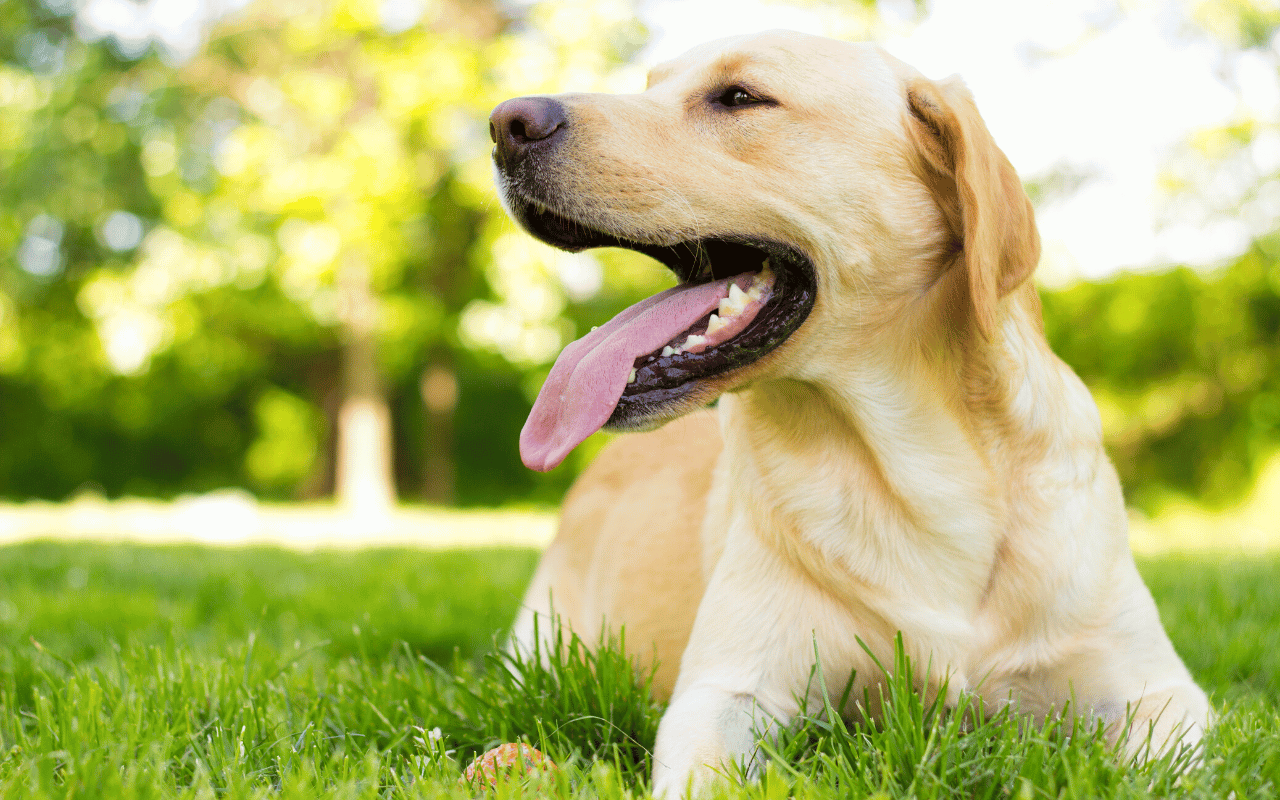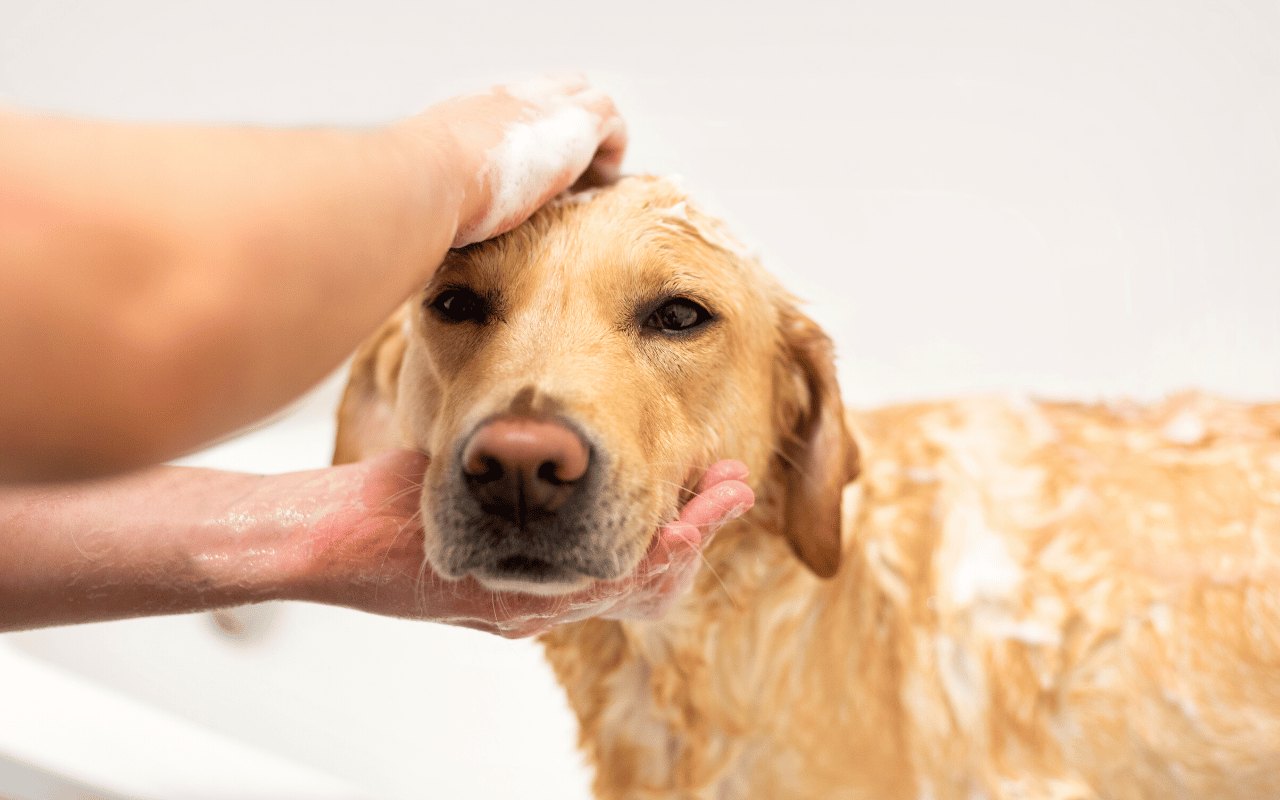An Overview of the Most Common Diseases in Labrador Retrievers
Do you want to know more about the common diseases in Labrador? These lovable and loyal dogs are great companions who can make even the most mundane moments enjoyable. However, with their boundless energy, love for food, and playful nature, comes the risk of common diseases in labradors.
As a devoted owner, it’s important to be aware of potential health issues to ensure your pup is always happy and healthy. From hip dysplasia to ear infections, being informed about these issues will help you detect symptoms early and provide the necessary care. So in this blog post, let’s take a look at the most common diseases in labradors.
Factors That Play a Role in the Development of Diseases
As with any breed of dog, many factors can contribute to developing certain diseases. It’s important to remember that not all labradors will develop these conditions, but understanding some potential predisposing factors can help spot symptoms early on and ensure your pup lives a long and healthy life.
✔️Age
As with humans, age significantly contributes to a dog’s susceptibility to certain conditions. Labrador Retrievers are considered seniors when they reach the age of 7. At this age, they may develop age-related diseases such as arthritis, cognitive dysfunction syndrome (CDS), and cancer. Early detection and preventative care can help reduce the chances of developing these diseases or treat them effectively if detected early.
✔️Genetics
Like most purebred dogs, Labrador Retrievers are prone to particular genetic health problems. Hip dysplasia, elbow dysplasia, retinal dysplasia, and progressive retinal atrophy (PRA) are some of the most common health concerns. These concerns can be avoided by only breeding Labrador Retrievers with healthy genes. If you are interested in getting a purebred Labrador Retriever, we recommend that you buy from a reputable breeder who has health certificates of the puppy’s parents.
✔️Lifestyle
A dog’s lifestyle plays an essential role in its overall labrador health and well-being. An unhealthy lifestyle can increase the risk of developing diabetes, obesity, heart disease, respiratory issues, and many other health conditions. Feeding your Labrador Retriever a well-balanced diet and regular exercise can help prevent many of these ailments. Overfeeding and lack of physical activity can lead to obesity, which can result in several complications.
✔️Environmental Factors
External factors like pollution and infections can also lead to the development of diseases. For instance, if your Labrador Retriever socializes with other dogs, it may contract infections such as kennel cough and Distemper. Parasites like fleas, ticks, and worms can also lead to disease. Regular visits to a veterinarian can help detect and treat these external factors that may harm your dog.
These are just some factors that can play a role in developing seizures in Labrador Retrievers.
Common Diseases in Labrador Retrievers
Now that we’ve discussed some of the factors that can influence labrador retriever health of a Labrador Retriever let’s take a look at some of the most common diseases in this breed.
🐾Arthritis
Arthritis is a disease that affects the joints in a dog’s body. It usually occurs when the cartilage, which acts as a cushion between the bones, starts to wear off, causing friction and inflammation. This can lead to pain, stiffness, and even decreased mobility. Arthritis is more common in senior dogs, and Labradors are no exception. However, it can also affect younger dogs, especially those who have previously suffered from joint trauma or are genetically predisposed to it.
One reason why Labradors are prone to arthritis is their high energy levels. These dogs are known for their love of outdoor activities, such as running, jumping, and playing fetch. All of these activities put stress on their joints, increasing the risk of joint damage. Labradors also tend to be overweight, which can worsen the condition. Being overweight puts extra pressure on the joints, causing faster cartilage wear and tear.
The good news is that there are ways to help manage arthritis in Labradors. Regular exercise is crucial, but it should be low-impact and controlled. Swimming, walking on a leash, and gentle playtime are excellent ways to keep your dog active without causing extra stress on their joints. Weight management is also essential. Feeding your dog a balanced diet and avoiding excessive treats can help maintain a healthy weight and reduce pressure on their joints.
Moreover, Glucosamine and chondroitin are common supplements that can help improve joint health and reduce inflammation. Prescription medication such as nonsteroidal anti-inflammatory drugs (NSAIDs) can help manage pain and improve mobility. Always consult your veterinarian before giving any supplements or medications to your dog.
🐾Lipoma
Lipomas are benign, non-cancerous tumors that grow in the fatty tissue beneath the skin. They can range from very small to large and appear anywhere on the body. Lipomas are most commonly seen in middle-aged to older dogs, and some Labrador Retrievers are more predisposed to developing lipomas than other dog breeds.
The exact cause of lipomas is unclear, but some factors can contribute to their development. Overweight dogs are more likely to develop lipomas, and some researchers suggest a genetic predisposition. Given the prevalence of obesity among Labrador Retrievers, it is no surprise that they are at a higher risk of developing lipomas.
If you suspect your Labrador Retriever has a lipoma, getting them checked out by a vet is essential. The veterinarian may take a sample from the suspected tumor to confirm that it is indeed a lipoma and not a more serious condition. Once the diagnosis is confirmed, your vet may recommend removing the lipoma if it affects your dog’s quality of life.
The primary method of treating lipomas is surgery. It is the most effective way to remove the tumor and ensure it does not return. However, surgery is not always necessary if the lipoma is small and is not causing any problems. In such cases, the vet may recommend monitoring the lipoma and checking the dog regularly to ensure the tumor is not growing.
🐾Laceration
A laceration is a medical term used to describe a wound created when an object tears through the skin and other tissues. In labrador retrievers, lacerations can be caused by various factors, including accidents and altercations with other animals. It is essential to identify the symptoms of laceration early on, as the extent of the injury can worsen if left untreated. Some common signs of a labrador retriever with laceration include excessive bleeding, Labrador limping, swelling, and reluctance to eat or drink.
In cases where the laceration is severe, immediate medical attention is necessary to prevent further complications. If your labrador retriever has suffered from a severe laceration that has resulted in excessive bleeding, you should apply pressure to the wound while transporting them to the nearest vet. If your dog has suffered from a less severe laceration, you can help by gently cleaning the wound with warm water and mild soap. However, regardless of the severity of the injury, it is imperative to have your dog examined by a qualified vet to determine the best course of action.
Fortunately, you can successfully treat most lacerations in Labrador retrievers. In minor cases, the wound will heal on its own with the help of proper wound care. In severe cases, the vet may need to perform surgery to stop the bleeding and close the wound properly. After surgery, your dog may need to take antibiotics or other medication to reduce the chances of infection while in recovery.
🐾Kennel Cough
Kennel Cough, also known as Infectious Canine Tracheobronchitis, is a respiratory disease that is highly contagious and can be spread through the air or direct contact with infected dogs or shared surfaces such as water bowls, toys, or food dishes. Symptoms of Kennel Cough include a persistent hacking cough, sneezing, nasal discharge, and loss of appetite. Most of the time, a dog with Kennel Cough will cough so much that it looks like they’re trying to hack up a hairball. Dogs with Kennel Cough can also have swollen lymph nodes around their necks.
Various viruses and bacteria can cause Kennel Cough, and some dogs are especially prone to it, like dogs that live in multi-dog households or labs housed in shelters or boarding facilities. The good news is that Kennel Cough is typically a mild illness that lasts a few weeks, but more severe cases occur. Dogs with weak immune systems or other underlying health problems may develop complications.
Prevention is the best measure to take with Kennel Cough. Vaccines exist that can help protect dogs from Kennel Cough. It’s also essential to keep your dog away from dogs that exhibit Kennel Cough symptoms and to practice good hygiene by washing and drying their food and water dishes to prevent contamination. It would also be best to keep your dog healthy by feeding them a healthy diet, giving them plenty of exercise, and keeping their sleep environment clean. A well-nourished, fit, and happy dog is less susceptible to disease.
🐾Papilloma
Papilloma is a viral disease affecting dogs’ skin and mucous membranes. It is caused by the papillomavirus, which is highly contagious and can spread from one dog to another through direct contact. In Labrador Retrievers, papilloma is most commonly seen in puppies and young dogs, although it can occur in dogs of all ages.
The symptoms of papilloma in dogs are easy to identify. They include the formation of small, cauliflower-like growths on the skin and mucous membranes, particularly around the mouth, nose, and eyelids. These growths can be pink, white, or gray and often have a rough, warty texture.
While papilloma is not usually harmful to dogs, it can cause discomfort and lead to secondary infections if left untreated. Luckily, papilloma is easy to diagnose and treat. Your veterinarian can diagnose papilloma by examining the growths and running some tests to confirm the presence of the virus. Treatment may involve surgically removing the growths or using medications to boost the dog’s immune system.
Preventing papilloma in Labrador Retrievers is relatively easy. Since the virus is transmitted through direct contact, avoiding exposing your dog to dogs with the virus is essential. It means keeping your dog away from parks and other areas where dogs congregate, especially if you notice any dogs with growths. It’s also a good idea to keep your dog’s immune system strong by feeding them a healthy diet and ensuring they get plenty of exercise.
🐾Moist Dermatitis
Moist Dermatitis is an irritated, red, and itchy area on your dog’s skin that can quickly develop into a hot, painful, and inflamed sore. Various factors, such as allergies, parasitic infections, insect bites and stings, and food intolerances, can cause this skin condition. Moist Dermatitis typically occurs in areas of the skin that are prone to trauma or moisture, such as the neck, ears, hips, and paws.
The early signs of Moist Dermatitis include intense itching, redness, and dog skin inflammation. As the disease progresses, the affected area may become hot, moist, and painful, and your dog may scratch or bite it excessively. If left untreated, the hotspots may become more painful and develop pus-filled blisters.
The best way to prevent Moist Dermatitis is to maintain proper hygiene and grooming practices for your dog. Regular bathing, ear cleaning, and parasite control can help keep your dog’s skin healthy and free from lesions. If your dog develops Moist Dermatitis, visiting your veterinarian, who will diagnose and treat the condition, is recommended. Treatment may include antibiotics, anti-inflammatory drugs, topical creams, and special shampoos, depending on the severity.
Home Remedies for Moist Dermatitis:
In addition to medical treatment, some home remedies can help alleviate the symptoms of Moist Dermatitis. These include applying a warm compress to the affected area, using water and apple cider vinegar or coconut oil to soothe the skin, and keeping the dog’s environment clean and dry.
🐾Obesity
What causes obesity in Labrador Retrievers? Sedentary lifestyles, overfeeding, and genetic predisposition are the major factors linked to obesity in dogs. Labrador Retrievers are known for their love of food and often enjoy consuming large amounts of food, which can lead to weight gain if left unchecked. Overfeeding and lack of exercise can quickly lead to obesity, which can increase the risk of other diseases such as diabetes, heart disease, and joint problems.
The symptoms of obesity in Labrador Retrievers can be observed in various ways. As an owner, you may notice a lack of activity, difficulty breathing, and difficulty walking. Additionally, excessive weight gain can cause the dog’s fur to lose its shine and the skin to become irritated, thus causing skin conditions. Moreover, dogs may also become lazy, showing a lack of enthusiasm for activities that they previously enjoyed.
Preventing obesity in Labrador Retrievers is crucial to keeping them healthy and happy. In order to prevent weight gain, it is essential to monitor their food intake and ensure that they exercise on a daily basis. Experts recommend twice-daily feedings and measuring the food into portions appropriate for your dog’s size and activity level. Additionally, incorporating at least 30 minutes of daily exercise, such as walks, swimming, or playtime with toys, can aid in maintaining a healthy weight for your Labrador Retriever.
🐾Ear Infection
Ear infections in Labrador Retrievers can occur for various reasons, such as allergies, ear wax buildup, water in the ear, and more. Allergies can cause inflammation in the ear canal, making it easy for bacteria and yeast to grow. Ear wax buildup can prevent proper ventilation and drainage of fluid from the ear, leading to infections. Swimming or bathing can trap water inside the ear canal, promoting bacterial growth. Make sure to wipe your dog’s ears regularly to avoid moisture collection and buildup of foreign objects.
Symptoms of ear infections in Labrador Retrievers include signs of discomfort, excessive scratching or pawing at the ears, head shaking, redness or swelling in the ear canal, foul odors, and discharge. If you observe these symptoms, take your dog to the vet as soon as possible. The vet will examine and diagnose the condition and suggest the best course of treatment.
Prevention measures for ear infections in Labrador Retrievers include regular cleaning of the ears, avoiding exposure to water or other irritants, and maintaining good hygiene. Clean your dog’s ears at least once a week using a cotton ball dipped in an ear-cleaning solution. Avoid using cotton swabs as they can push debris and wax further inside the ear, causing infections. Cut your dog’s hair around the ears regularly to improve ventilation and avoid the collection of debris in the ear canal.
Treatment for ear infections in Labrador Retrievers includes medication and lifestyle changes. Medication may include topical ear drops, oral antibiotics, and pain management medications. Your vet may also suggest lifestyle changes such as avoiding exposure to allergens or irritants, changing your dog’s diet, and using specialized ear-cleaning solutions. In some severe cases, it may require surgery.
🐾Post-operative Wound
A post-operative wound is a term that refers to a surgical incision that is not healing properly. It can be an open wound developing after a surgical procedure that breaks the skin. It can also occur after surgery, where stitches have been given to close the incision. Post-operative wounds have varying degrees of severity, and it may take a few days to weeks to heal completely.
Post-operative wounds in Labradors may occur if the wound is not adequately closed after surgery, if there is a foreign object in the area, or excessive licking of the wound. Your dog’s inability to leave the wound alone may worsen or prevent healing, leading to infections, additional surgeries, added medical expenses, and even more severe labrahealth issues.
The signs of post-operative wounds in Labradors may include drainage or discharge from the wound, redness, and swelling, excessive licking or chewing of the wound, reluctance to move around due to pain, and fever. If you observe any of these symptoms, bringing your Labrador to the vet is essential immediately.
How to manage post-operative wounds in Labradors:
The key to managing post-operative wound in Labradors is early detection, proper wound care, and veterinary support. When your Labrador undergoes surgery, ask the veterinarian for proper wound care instructions and follow them closely. Keep the wound clean by avoiding any exposure to dirt or other contaminants. Provide your dog with an Elizabethan collar to prevent excessive licking or chewing of the wound. Pain medication and antibiotics may be prescribed to help with pain and prevent infection.
🐾Progressive Retinal Atrophy
PRA is a degenerative disease affecting the retina, the eye part responsible for vision. In dogs with PRA, the photoreceptor cells located in the retina break down, causing vision impairment and eventually leading to blindness. Labrador retrievers are prone to PRA because they often carry a gene mutation that causes the disease. It means that purebred labrador retrievers are more likely to develop PRA than mixed-breed dogs.
The symptoms of PRA in labrador retrievers usually start at a young age, around 3-5 years old. The first symptom owners notice is difficulty seeing at night, also known as night blindness. Labrador retrievers with PRA may also display an uncoordinated gait and bump into objects they cannot see. As the disease progresses, dogs lose their peripheral vision, and eventually, they become completely blind. However, it is essential to remember that PRA does not cause pain to dogs and does not affect their other senses or overall health.
Sadly, there is no cure for PRA in labrador retrievers or any other dog breeds. However, some options can slow down the progression of the disease and improve the dog’s quality of life. One of the most effective treatments is a diet high in antioxidants such as vitamins A, E, and C. Antioxidants can protect the retina from further damage and slow down the deterioration. Other options include supplements and environmental modifications, such as using visual aids or training the dog on scent or hearing cues. It is crucial to seek medical advice from a veterinarian when you suspect your labrador retriever may have PRA.
🐾Hypothyroidism
Hypothyroidism occurs when thyroid hormone production is deficient, causing your dog’s metabolism to slow down. It can lead to various symptoms, including weight gain, lethargy, hair loss, dry skin, and cold intolerance. If left untreated, hypothyroidism can cause more severe symptoms such as heart disease, neurological issues, and infertility. As a responsible dog owner, it is essential to be aware of the signs of this disease to ensure speedy diagnosis and treatment.
While hypothyroidism can affect any dog breed, Labrador Retrievers seem more predisposed to the disease. This is because hypothyroidism can have a hereditary component, and this breed is prone to certain genetic conditions that can lead to hypothyroidism. Additionally, environmental factors such as poor diet, autoimmune disease, or exposure to toxins can also play a role in developing hypothyroidism.
Fortunately, hypothyroidism is a treatable condition. In most cases, medication is used to replace missing thyroid hormones, which can significantly improve your dog’s quality of life. It is important to note that hypothyroidism is a lifelong condition, and your dog will likely need medication for the rest of his life. Regular blood tests and check-ups with your vet are also essential to ensure your dog’s condition is properly managed.
Preventing hypothyroidism in your Labrador Retriever involves several steps, including feeding your dog a healthy and balanced diet, regular exercise, and avoiding exposure to harmful toxins. You should also ensure that your dog’s breeder is reputable and has conducted proper testing to avoid hereditary hypothyroidism.
🐾Heart Disease
Heart disease is a serious condition that can affect a dog’s heart and blood vessels. The most common types of heart disease in dogs are valvular and dilated cardiomyopathy. Valvular disease affects the valves that control blood flow in the heart, while dilated cardiomyopathy affects the heart muscles and can cause the heart to enlarge. Labrador Retrievers are more prone to dilated cardiomyopathy than other breeds due to their genetics. Symptoms of heart disease in Labrador Retrievers include lethargy, loss of appetite, coughing, and difficulty breathing. If you suspect your Labrador Retriever has heart disease, seeing a veterinarian as soon as possible is essential.
Preventing heart disease in Labrador Retrievers involves a healthy lifestyle. This breed is prone to obesity, which can contribute to the development of heart disease. Feeding your Labrador Retriever a healthy diet and ensuring they get enough exercise can help prevent obesity and keep their hearts healthy. Regular check-ups with a veterinarian can also help identify any signs of heart disease early on.
If your Labrador Retriever is diagnosed with heart disease, various treatment options are available. Treatment depends on the type of heart disease present and the severity of the condition. In mild cases, you can use medication to manage the symptoms of heart disease. In more severe cases, surgery may be required to repair or replace damaged heart valves or correct the heart’s rhythm.
🐾Laryngeal Paralysis
Laryngeal Paralysis is a condition that affects the cartilage of a dog’s larynx, making it difficult for them to breathe. When a dog breathes normally, the larynx opens up to allow air to pass in and out of the lungs. However, with laryngeal paralysis, the cartilage fails to open properly, causing labored breathing and making it difficult for the dog to regulate body temperature. The first symptoms of this condition start to appear in dogs between the ages of 7-9 years old.
Dogs with this condition may have a hoarse or weak-sounding bark or experience frequent coughing fits. They may pant loudly even if they’re not active or in a warm environment. They may also have difficulty eating, resulting in weight loss. If your Labrador shows these symptoms, you must take them to the vet as soon as possible. While Laryngeal Paralysis is not curable, proper diagnosis and treatment can improve your dog’s quality of life.
Diagnosis of Laryngeal Paralysis typically involves a physical exam and X-rays of the neck area. In some cases, a CT scan is necessary. Your vet may also recommend a laryngeal exam under sedation to assess the severity of the condition. Treatment for Laryngeal Paralysis mainly involves managing the symptoms. Surgery is an option, but it comes with risks and is not always successful. Weight management and keeping your dog in a cool environment can also help alleviate symptoms. If your Labrador’s Laryngeal Paralysis is severe, your vet may recommend a permanent tracheotomy that involves creating a hole in the trachea for easier breathing.
These are some potential health issues that can affect your Labrador Retriever. It is important to be aware of these conditions and take preventive measures to ensure your dog’s well-being.
Frequently Asked Questions
Q: What is Labrador Retriever exercise induced collapse?
Exercise-induced collapse (EIC) is a genetic condition that affects some Labrador Retrievers. It causes dogs to become weak and collapse after intense exercise, typically between five and 15 minutes of exertion. A mutation in the DNM1 gene causes EIC, and it is usually diagnosed through genetic testing. Although no specific cure for EIC exists, dogs can still live long and healthy lives with appropriate management and exercise.
Q: What is the common cancer in labradors?
Lymphoma is the most common cancer in Labrador Retrievers. It affects the lymph nodes and can spread throughout the body, making it difficult to treat. Other cancers that labs are prone to include osteosarcoma (bone cancer), hemangiosarcoma (cancer that affects blood vessels), and mast cell tumors.
Q: What do labs usually die from?
Labs are prone to several health issues, but cancer, particularly lymphoma, is the leading cause of death in the breed. Other common causes of death include hip dysplasia, bloat, and heart disease. However, it’s worth noting that not all labs die from these conditions, and many live into their golden years with proper care and regular check-ups.
Q: What is centronuclear myopathy in Labrador?
Centronuclear myopathy (CNM) is a genetic disorder that affects some Labrador Retrievers. A mutation in the MTM1 gene causes it and leads to muscle weakness and poor muscle development. Dogs with CNM can still live long, happy lives with proper care but may require extra support with exercise and mobility.
Q: What is Labrador Retriever tricuspid valve dysplasia?
Tricuspid valve dysplasia is a congenital heart defect that affects some Labrador Retrievers. It involves a malformation of the tricuspid valve, which separates the heart’s right atrium and right ventricle. Dogs with tricuspid valve dysplasia may show signs of heart failure, such as coughing, lethargy, and weight loss. Treatment typically involves medication and management of the condition through regular check-ups with a veterinarian.
Final Words
After learning about the common diseases in Labrador, I can’t help but feel a renewed sense of responsibility as a pet owner. It’s daunting to think that our furry friends are susceptible to many ailments, but the good news is that most of these illnesses are completely preventable.
We can ensure that our Labradors live long and healthy lives by taking measures such as frequent vet visits, proper nutrition, and regular exercise. It’s important to stay educated on these diseases to catch any symptoms early on and provide our pets with the best possible care. As a Labrador owner, I’m committed to doing everything I can to keep my pup in good health, and I encourage every other owner to do the same. After all, our Labradors are more than just pets; they’re cherished members of our families.









